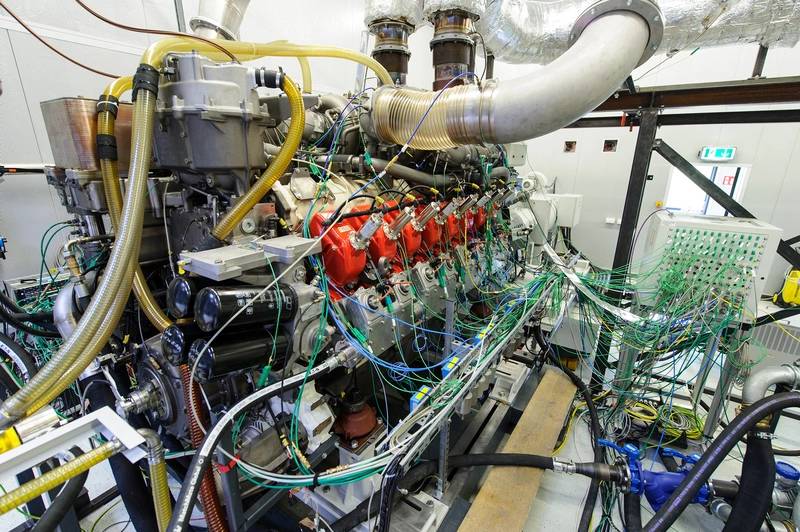Rolls-Royce Unveils MTU Gas Marine Engine
MTU’s new gas engine for commercial marine applications – the first from Rolls-Royce – has undergone some 3,000 hours on the test bench and is now ready to enter series production as the first high-speed pure-gas marine engine.
“We can now confirm that the engine meets both our requirements and those of our customers: its performance and its acceleration behavior are similar to the excellent characteristics of a diesel engine,” said Dr. Ulrich Dohle, CEO of Rolls-Royce Power Systems AG. “It is economical, reliable and clean.”
The new engine from MTU, part of Rolls-Royce Power Systems, offers reduced fuel costs and high performance while meeting IMO III emission standards with no additional exhaust gas treatment.
As a result of dynamic acceleration behavior, low environmental impact, reliability and economy, the new MTU gas engines are suited to tugboats, ferries, push boats and special purpose vessels such as research vessels. In fact Rolls-Royce said it has already received orders for new commercial vessel builds.
The 16-cylinder gas engine will cover a power range from 1,500 to 2,000 kW and will be based on MTU’s 16V 4000 M63 diesel engine for workboats. By the end of 2017, the first series engines will be used to power a tug built by Damen Shipyards for Svitzer towage and salvage company; the two companies have entered into collaboration with MTU to jointly put the world’s first tug powered by high-speed gas engines into service.
The gas engine portfolio will initially be supplemented by an eight-cylinder engine, which is to be available on the market with a power range of 750 to 1,000 kW. In 2019, this MTU gas engine will provide the propulsion for a new Lake Constance ferry operated by the local public utility, Stadtwerke Konstanz, which will ply between the two Lake Constance towns of Constance and Meersburg. The new ferry will be one of the first in Europe to be powered by a high-speed pure-gas engine.
The new MTU gas engines will be equipped with a multipoint gas injection system, a dynamic motor management system and an advanced turbocharger. The multipoint gas injection system is designed to provide the engine’s dynamic acceleration behavior, increased performance and reduced emissions. The competition concept ensures that the IMO III emission standards are met without the need for additional exhaust gas treatment. Controlled combustion ensures that fuel is used efficiently. The safety concept, which has been optimized for gas operation, includes double-walled gas supply lines, which means that no additional complex safety precautions are required in the engine room. On the test bench, it was possible to simulate real-life maneuvers, which represented the dynamic acceleration behavior of a diesel engine.
“We are convinced that gas engines will become increasingly more important as supplements to our proven diesel engines for marine applications,” Dohle said. “Natural gas is an important fuel of the future. It will be available longer, it is cheaper to obtain in many regions of the world and has a better environmental footprint than heavy oil or diesel.”
According to Rolls-Royce, future emission regulations will demand even more environmentally friendly propulsion systems than are currently available. In the case of the gas engine, health threatening substances in the exhaust gas have been reduced by 80-100 percent compared with the diesel engine and greenhouse gases by up to 11 percent.


